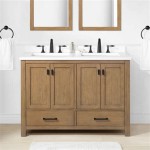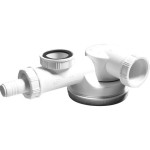How To Seal a Wood Bathroom Countertop
Wooden countertops offer a warm, natural aesthetic to bathrooms. However, their porous nature makes them susceptible to water damage if not adequately sealed. Proper sealing protects the wood from moisture, preventing warping, staining, and rot. This guide outlines the necessary steps to effectively seal a wood bathroom countertop.
Preparing the Countertop
Preparation is crucial for successful sealing. A clean, smooth surface allows for even sealant penetration and adhesion. Follow these steps:
- Clean the countertop thoroughly with a wood cleaner appropriate for your wood type. Remove any existing sealant, grease, or grime.
- Sand the countertop starting with a coarse grit sandpaper (e.g., 120 grit) and gradually moving to finer grits (e.g., 220 grit). This creates a smooth surface and opens the wood pores for better sealant absorption.
- Remove all sanding dust with a tack cloth or vacuum. Wipe the surface with a damp cloth to ensure no dust particles remain.
- If the countertop is newly installed, allow it to acclimate to the bathroom environment for at least a week before sealing.
Choosing the Right Sealant
Selecting the appropriate sealant is vital for long-lasting protection. Consider the following when making your choice:
- Water Resistance: Opt for a sealant specifically designed for wet environments like bathrooms. Look for products that offer excellent water repellency.
- Durability: Choose a sealant that can withstand daily use, cleaning, and exposure to bathroom products.
- Finish: Sealants come in various finishes, including matte, satin, and gloss. Select a finish that complements your desired aesthetic.
- Food Safety: If the countertop will be used for food preparation, choose a food-safe sealant.
- Application Method: Consider whether you prefer a brush-on, wipe-on, or spray-on application.
Applying the Sealant
Proper application technique ensures a uniform and effective seal. Follow these steps:
- Test the sealant on an inconspicuous area of the countertop to ensure compatibility and desired finish.
- Work in a well-ventilated area. Wear gloves and eye protection.
- Apply the sealant in thin, even coats, following the manufacturer's instructions. Avoid pooling or thick applications, which can lead to uneven drying and a sticky finish.
- Allow each coat to dry completely before applying the next. Drying times vary depending on the product and environmental conditions. Refer to the manufacturer’s instructions for specific drying times.
Number of Coats
The number of coats required depends on the sealant type and the porosity of the wood. Consider these points:
- Most wood bathroom countertops require at least three coats of sealant for adequate protection.
- Highly porous woods may benefit from additional coats.
- Allow the final coat to cure completely before using the countertop. Curing times are typically longer than drying times, ensuring the sealant reaches maximum hardness and water resistance.
Maintaining the Seal
Regular maintenance helps prolong the life of the sealant and protect the countertop. Implement the following practices:
- Clean the countertop regularly with a mild soap and water solution. Avoid harsh chemicals or abrasive cleaners.
- Wipe up spills immediately to prevent water penetration.
- Avoid placing hot items directly on the sealed surface.
- Reapply sealant periodically as needed. The frequency depends on the type of sealant used and the amount of wear and tear the countertop experiences. Regular inspection for signs of wear, such as watermarks or dull spots, can indicate when resealing is necessary.
Troubleshooting
Addressing issues promptly can prevent further damage and maintain the countertop's appearance. Consider these common problems and solutions:
- Sticky Finish: This can be caused by applying too thick of a coat or not allowing sufficient drying time between coats. Lightly sand the affected area and reapply a thin coat.
- Watermarks or Stains: Indicate the sealant is wearing down and needs reapplication. Clean the countertop thoroughly and apply a fresh coat of sealant.
- Chipping or Peeling: Can result from improper surface preparation or using an incompatible sealant. Sand the affected area to remove the damaged sealant and reapply, ensuring proper preparation.
Safety Precautions
Prioritize safety during the sealing process. Adhere to these precautions:
- Work in a well-ventilated area to avoid inhaling sealant fumes.
- Wear gloves and eye protection to prevent skin and eye irritation.
- Dispose of sealant and applicators properly according to local regulations.

How To Build Protect A Wood Vanity Top Houseful Of Handmade

How To Build Protect A Wood Vanity Top Houseful Of Handmade

How Do Wooden Countertops Really Hold Up Exquisitely Unremarkable

How To Build Protect A Wood Vanity Top Houseful Of Handmade

The Foolproof Guide To Diy Wood Countertops For A Bathroom

Diy Wood Bathroom Countertop An Easy Way To Change Your Vanity In 1 Weekend Noting Grace

How To Finish A Wood Bathroom Countertop And Vanity South House Designs

How To Build Protect A Wood Vanity Top Houseful Of Handmade

Finish For A Bathroom Vanity The Wood Whisperer

Diy Wood Bathroom Countertop An Easy Way To Change Your Vanity In 1 Weekend Noting Grace







